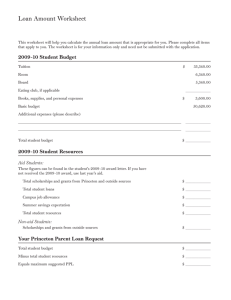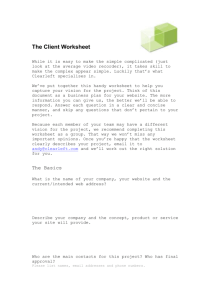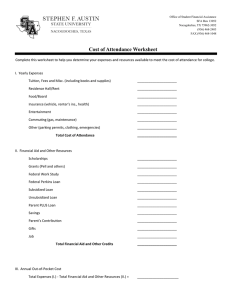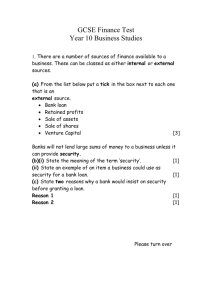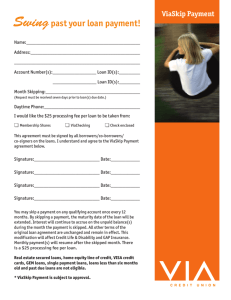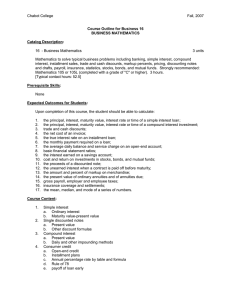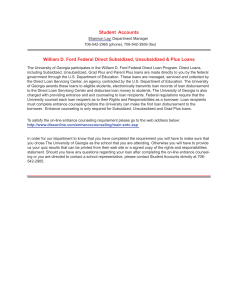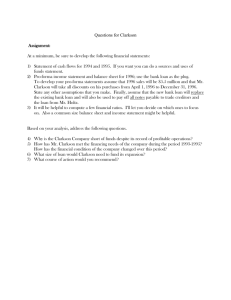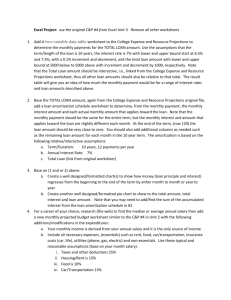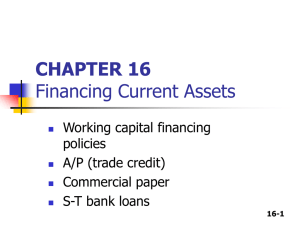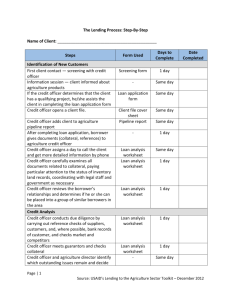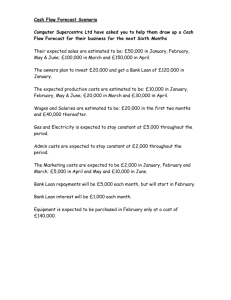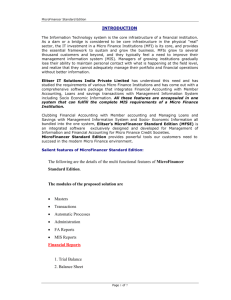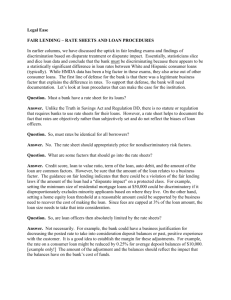Business Plan Checklist
advertisement
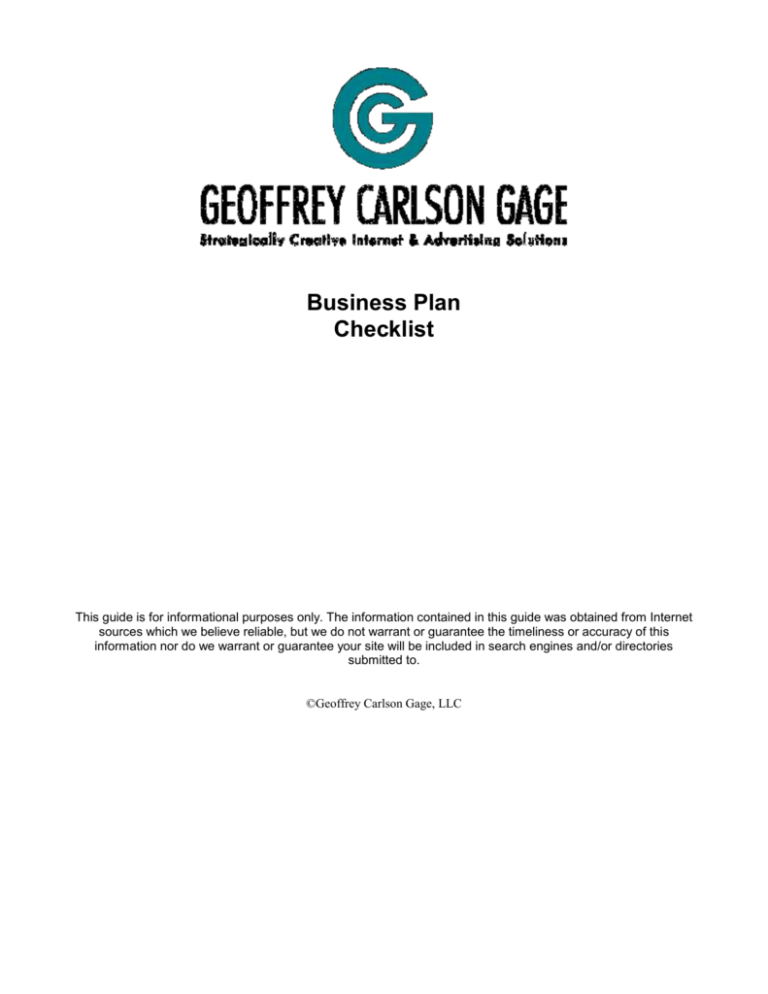
Business Plan Checklist This guide is for informational purposes only. The information contained in this guide was obtained from Internet sources which we believe reliable, but we do not warrant or guarantee the timeliness or accuracy of this information nor do we warrant or guarantee your site will be included in search engines and/or directories submitted to. ©Geoffrey Carlson Gage, LLC Cover Page Title Name Address Telephone and fax numbers Web site URL and e-mail address Table of Contents One-page listing of the major sections and documents in the business plan Owner’s Statement One-page description of the business and the owner Business name, address, phone numbers, fax number, web site URL, and e-mail address Your name, home address, home phone number Summary of your business experience and philosophy Brief business description: year the business was established; current financial status Executive Summary Business plan highlights Purpose, Priorities and Goals Overall career purpose and at least six priorities Long range (3-5 year) purpose, at least six priorities and at least two goals per priority Short term (1-2 year) purpose, at least six priorities and at least three goals per priority Business Description Brief history of your company and your basic purpose/mission statement Services you offer and products you sell Special product used Equipment Physical location Unique features that distinguish your practice from others If you sell products, include a product register with the suppliers’ names, define your position in the chain of distribution and specify the types of clients who purchase products Marketing Image Target market profiles (at least 3) Differential advantage statement Competition analysis—including steps you’ll take to meet any challenges. Marketing goals for all four areas, include a timeline, budget and rationale for each strategy If you sell products include a description and cost for the following: inside displays; additional sales staff (include training); equipment; and special promotions, discounts and sales. Annual marketing budget and calculate the actual cost per potential client Summary of how your marketing strategies will enable you to succeed Financial Analysis Income potential Projections and trends for your specific profession (nationally and locally) Average income and number of clients for practitioners in your specific field (both nationally and locally) for the first 6 months of practice, the first year, the second year, and the third year Fees: including introductory offers, pre-paid package discounts, professional courtesy discounts and sliding fee scales Amenities to be absorbed in pricing Your competition’s effect on pricing Equipment, supplies and inventory needed for next 12 months and acquisition plan Current financial status Financial Sheets: Opening Balance; Start-up Costs Worksheet; Business Income and Expense Forecast; Monthly Business Expenses Worksheet; Monthly Personal Budget Worksheet; Cash Flow Forecast Money needed to open business and the annual operations budget for each of the next 3-5 years Break-even analysis Potential funding sources and note how any loans are to be secured Operations Your management qualifications Assessment of your strengths and challenges Specify the legal form of ownership Requisite licenses, permits and insurance coverage Brief overview of your company policies and procedures Safety precautions, security needs, and a plan to reduce these types of risks Accounting and control summary Group practice: describe the various functions, the person(s) responsible, and level of authority. Staff: list the various functions, estimated number of people needed for each function, describe the training required, and state your compensation plan Risk Assessment Effects your competition has on all phases of your business Possible external events that might hamper your success Potential internal problems Contingency plan to counteract the most significant risks Success Strategies Goals for developing your success strategies Methods for implementing your business plan and having a prosperous practice Appendix Personal net worth statement Copies of last two year’s income statements and balance sheets List of client commitments Copies of business legal agreements Credit status reports News articles about you or your business Photographs of your location Copies of promotional material Letters of recommendation from your clients Key employee resumés Personal references Supplement (for business plans used for securing loans) Executive Summary State the type of business loan(s) you’re seeking (e.g., term loan, line of credit or mortgage) Summarize the proposed use of the funds Calculate the projected return on investment Write a persuasive statement of why the venture is a good risk Financial Analysis Describe the loan requirements: the amount needed, the terms and the date by which it’s required. State the purpose of the loan, detailing the facets of the business to be financed Provide a statement of the owner’s equity List outstanding debts. Include the balance due, repayment terms, purpose of the loan and status Document your current operating line of credit—the amount and security held References List all pertinent information regarding your current lending institution: branch, address, types of accounts and contact person(s) List the names, addresses and phone numbers of your attorney, accountant and business consultant
